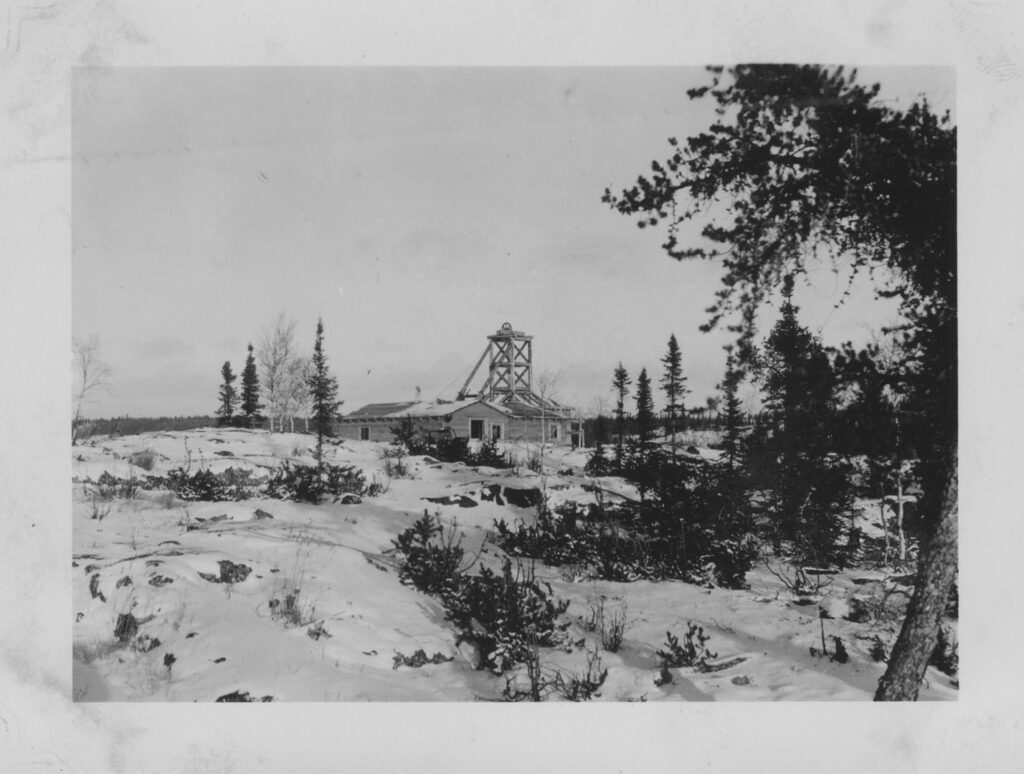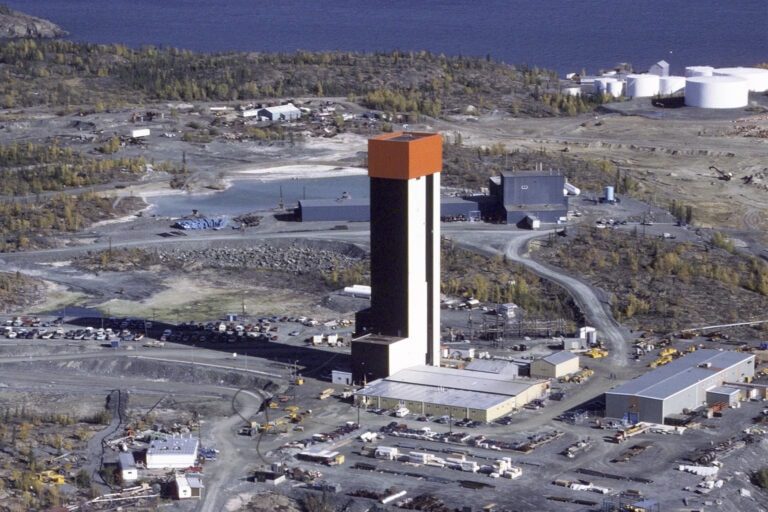A sneak peek, from the upcoming February/March issue of the print edition of EDGE YK magazine:
On a windblown outcrop on the east side of Yellowknife Bay, there once stood a Dene fishing village. When prospectors arrived in the 1920s and ‘30s, it was deserted. Mud and stone hearths marked the cabins, with copper trade pots discarded in the weeds. Standing above was a huge timber cross raised by a Catholic preacher years before, now weathered and rotting with age. The people were all gone – in the woods nearby, their graves were overgrown.
No mighty deity could protect from the sickness that pervaded indiscriminately through trading posts of the Northwest Territories in the 19th and early 20th centuries. The influenza outbreak of 1928 was the last, and perhaps most devastating. Carried north by a vastly improved steam-boat network, the very contagious disease was spread by S.S. Distributor, the flagship of the Hudson’s Bay Company. That summer it hit the small fishing village at the mouth of the Yellowknife River. With a lack of immunity among the Dene to the foreign virus, when it struck, the casualties were high.
For the surviving families, their only choice was to flee by traveling deeper into the tundra and bunkering down, often for years. When they returned, everything had changed. The traders were gone but somebody else was there. The year was 1935 and on the east side of Yellowknife Bay, near the giant cross, strange new white men were scrambling on the rocks, looking for something precious.
Yellowknife’s gold was incumbent to events that took place on Great Bear Lake, 300 km to the north, where Gilbert Labine discovered silver and radium on Echo Bay. It became the first commercial mine in the Northwest Territories in 1932 and set off an incredible rush to find and develop mineral resources. The men and women who followed the rivers north by boat and plane are now legendary. They fanned out from Great Bear Lake in all directions, paying close attention to where ancient volcanic rocks emerged from the waters. Yellowknife Bay was one such place.
He is fondly remembered in the mining community as ‘Yellowknife Johnny.’ His full name was Cyril John Baker, and it was he, in 1934, who gets the credit for finding the gold that started it all. His journey began one year before with Herb Dixon, when they were both on the payroll of Bear Exploration and Radium Ltd. Their tough, 1933 summer expedition from Great Bear Lake to the headwaters of the Yellowknife River, and then down to its mouth, would have been dismal except for the chance observation of mineralized gossans, a type of highly oxidized rock, along the way. It was enough to bring Johnny Baker back, and in September of 1934 visible gold was discovered on Yellowknife Bay.
Chosen to personally excavate the gold find was Major Lockie T. Burwash, a former government ethnographer and geologist. In his early career, Burwash was infatuated with searching for the remains of Sir John Franklin. Establishing a gold mine at the Yellowknife River held a certain appeal to him, since those same waters had led Franklin to the Arctic Ocean in 1820. Burwash’s mine got its start in the spring of 1935 when 10 men landed on a skied plane to set up camp and start blasting a pit on the quartz vein.
The men who came to work at the mine are recognized as founding fathers of modern-day Yellowknife. Together with the Major and Johnny Baker, the crew included Jock McMeekan. Jock was a gruff, old prospecting pal of Baker’s from Quebec with a robust personality that made you either love or loathe him. Within a few weeks of their arrival, the white men were visited by a group of Yellowknives Dene returning from the Arctic. In their writings, both Jock McMeekan and Johnny Baker convey clear admiration for the Dene, describing them as kind, resourceful, and initially shy. They say they were open to new trade opportunities and offered services in providing meat, timber, and general labour.
“The Dogrib and Yellowknifes have a keen eye for rock and are interested in prospecting and anxious to learn,” McMeekan says in a 1937 article. He was appointed emissary to negotiate with the Dene at the Dettah village and some elders today still remember working at the Burwash Mine all those years ago.
In the summer of 1935, the miners blasted a 30-foot deep pit on the richest part of the vein and pulled up 16 tons of ore, bagged it into canvas sacks, and sent it on a barge to British Columbia for assay. These tests returned 200 ounces of gold, or 13 ounces per ton, an incredible assay! A shaft was put down 125 feet and tunnels driven out to follow the quartz.
The miners at the little Burwash had an important job in the winter of 1935/1936: find more gold. At the end of shift, they retreated back to the warmth of their lodging. The lakefront log cabin camp was tucked within a picturesque cove at the base of a small hill, protected from the northern winds. Tiny plumes of smoke rose to mark the only white settlement for 100 km. The next day it was back to work. The diesel engine and compressor rumbled on, and so did the drills below the hill. While they did intersect some mineralization, those high-grade pockets, the stuff they had seen on surface, was nowhere to be found.
In a last ditch effort to save face, Burwash freighted up a diamond drill to probe the vein in 1936. Press statements were optimistic; nonetheless, the claim was ‘panned out.’ Yellowknife’s first gold mine died before it really began.
It was now October of 1936 and the remnant crew was preparing for freezeup. This was the in-between season, where inclement weather and unstable ice on the lakes meant that no airplanes could fly in or out of the North. The Burwash camp was isolated from the rest of the world, save for the small wireless radio transmitter set up by Canadian Airways. Eventually, once the ice on Yellowknife Bay was thick enough, they would call for a plane to evacuate them for the winter. Young assayer Jim Parres was finishing up his work when pain struck. It was a heart attack, and although they could message for help, no plane would be coming. Only with the advice of an Edmonton doctor on the other end of the wire was the man’s condition stabilized. The camp had no morphine, and so the doctor prescribed half-doses of whiskey. “Radio Saves Man’s Life” was the media headline across the world. The sensation that put Yellowknife Bay on the map was also the last news story to come out of the little Burwash Mine. Once planes could again fly, it was abandoned.
The discovery of the Burwash gold vein in 1934 is considered such a pivotal moment in history that the City of Yellowknife marks it as its founding year. But in 1934, there was no town on the waterfront peninsula that we now call Yellowknife. Even with the construction of Burwash Mine in 1935, there was very little evidence that Yellowknife Bay would grow to become the focus of a great mining district. The gold rush was yet to come…
To be continued







